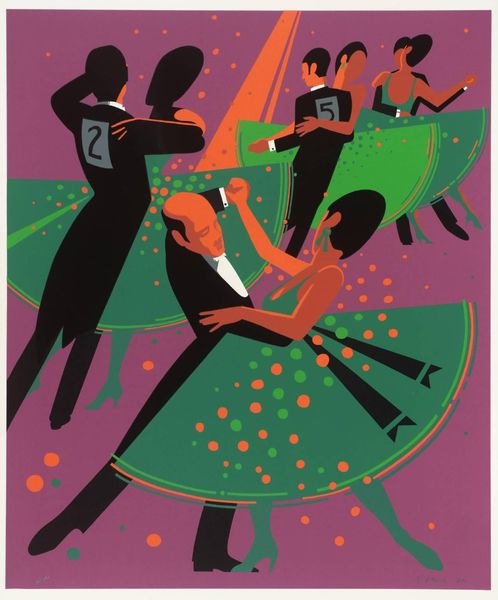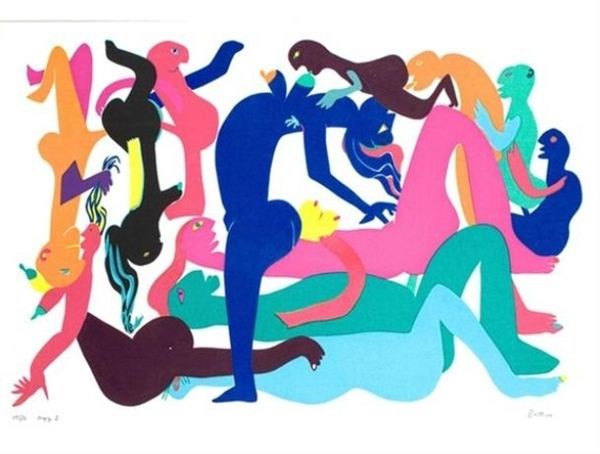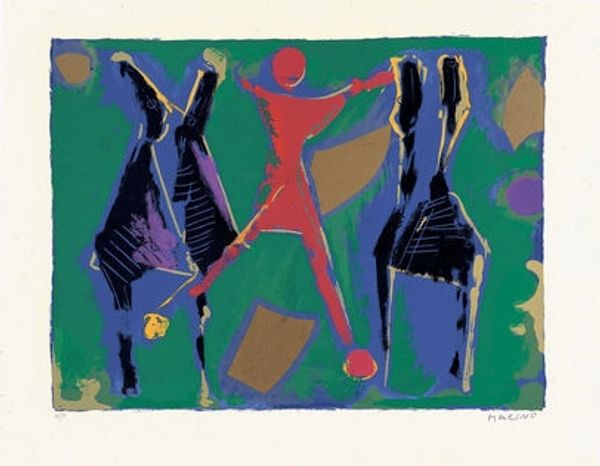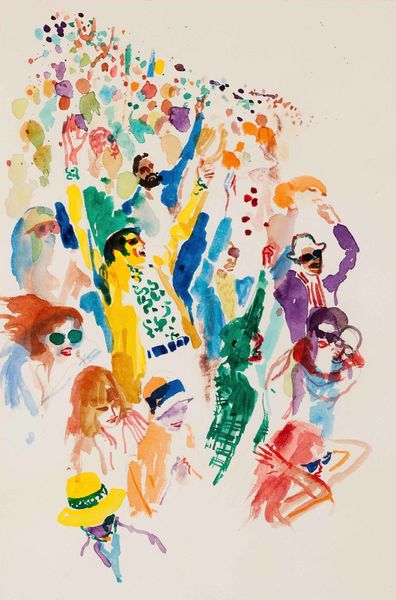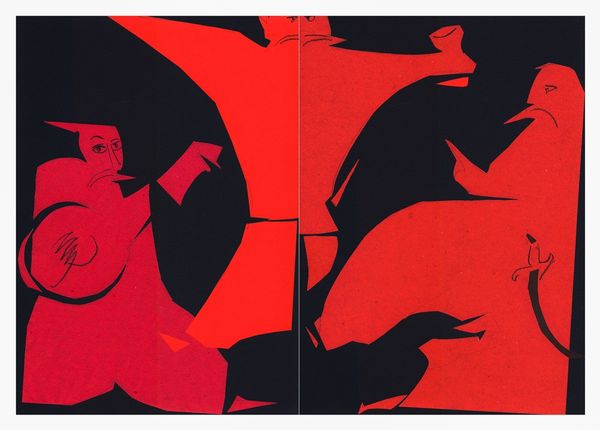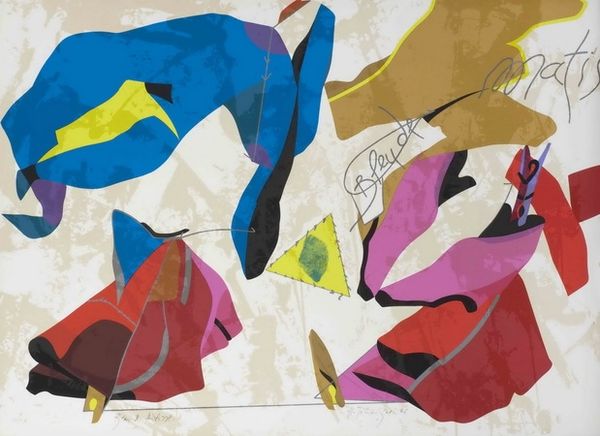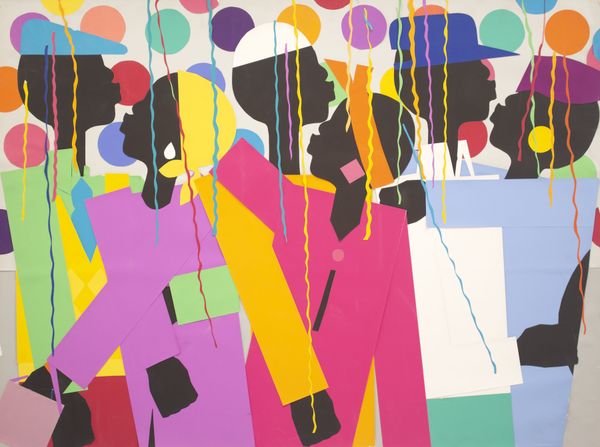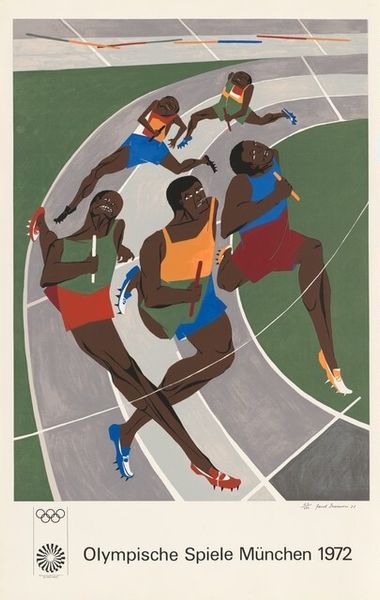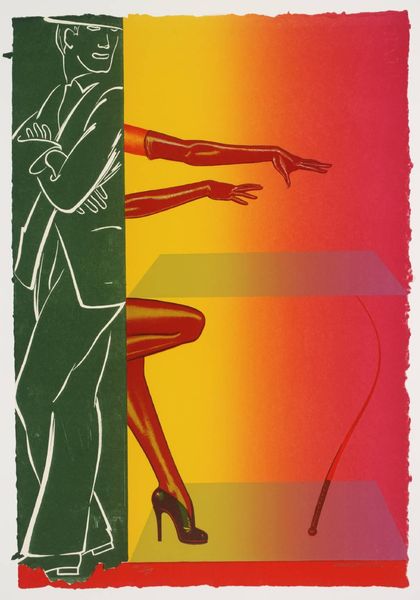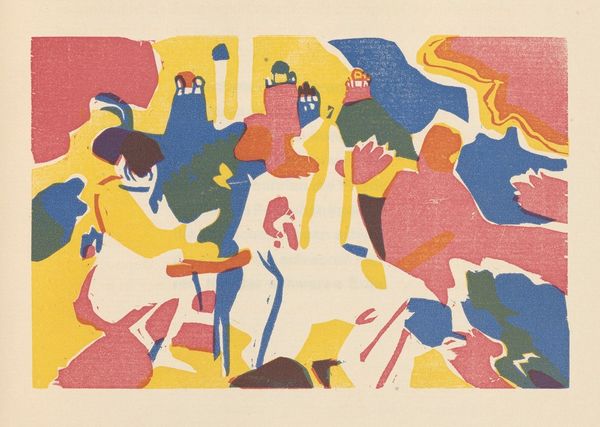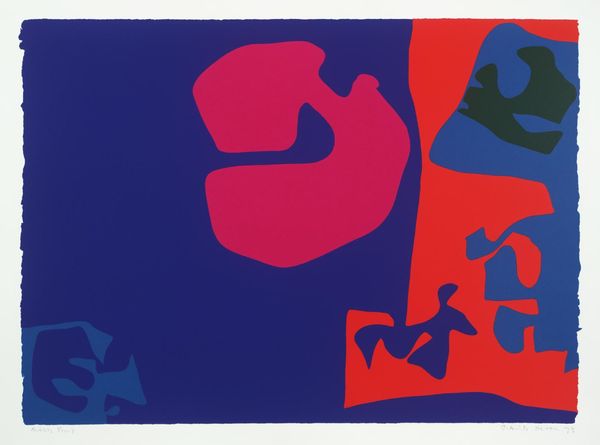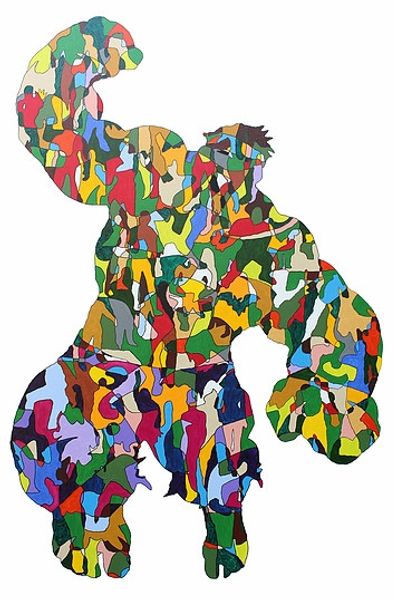
Dimensions: overall (each of three panels): 241.3 × 182.88 cm (95 × 72 in.) framed (height, each of three panels): 246.38 cm (97 in.)
Copyright: National Gallery of Art: CC0 1.0
Editor: Here we have Oliver Lee Jackson’s "Triptych (3.20.15, 5.21.15, 6.8.15)," made in 2015. It looks like a mixed-media piece, probably with acrylic paint involved. It definitely feels dynamic and full of energy. What are your thoughts? Curator: This triptych exemplifies Jackson's commitment to pushing material boundaries. It begs the question: How does the choice of acrylics – a relatively modern, readily available medium – affect the overall reading of figures engaged in what looks like movement? Editor: That's interesting, because you don’t see that particular medium in all abstract expressionism! So you mean, like, how accessible or industrial it might seem? Curator: Exactly. Does the acrylic’s almost synthetic quality contrast with the timelessness of figuration? Also, how do you perceive Jackson’s technique of layering colours? Consider it as a record of labor; he meticulously applied each layer. How does this contribute to your understanding of his creative process? Editor: I see what you mean, how his choices in materials highlight the means of its creation and even maybe influence our reading. The flat areas of bright colour seem almost screen-printed, suggesting a kind of manufactured image. I am seeing that everywhere. Curator: Precisely! The tension lies in the meeting of high art and seemingly mass-produced visuality, prompting us to reflect on Jackson’s critique, or celebration, of consumer culture within art production. I think it's more playful and experimental in pushing art's boundaries. Editor: I see that tension much more clearly now – thanks! I never would have seen it if I had focused on it in a traditional analysis, like color and composition. Curator: That's exactly the kind of observation this piece encourages! We see art both in terms of process, of the actions behind its making, and within a broader world of material and industrial concerns.
Comments
No comments
Be the first to comment and join the conversation on the ultimate creative platform.
